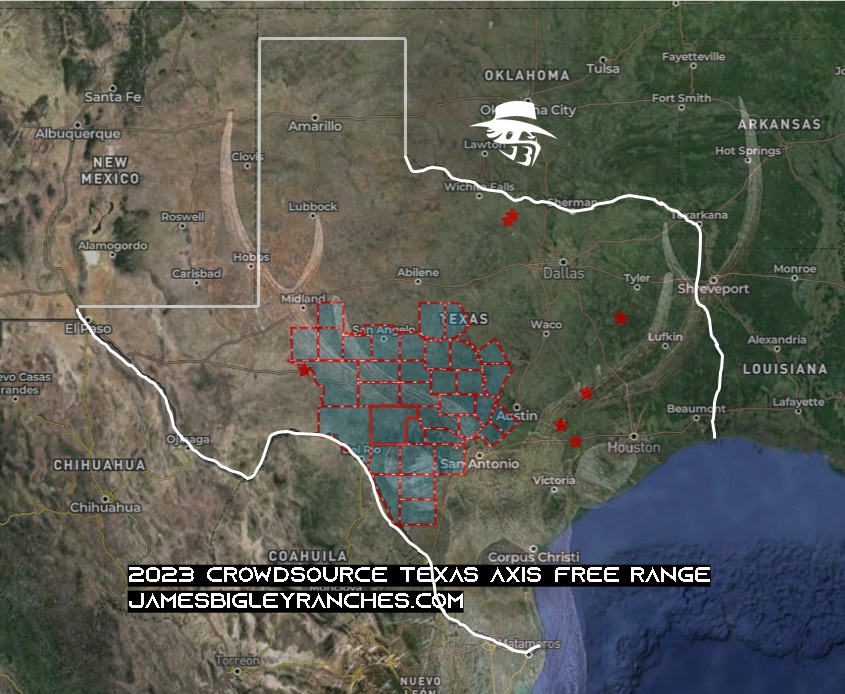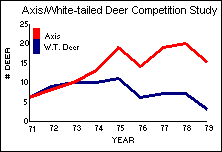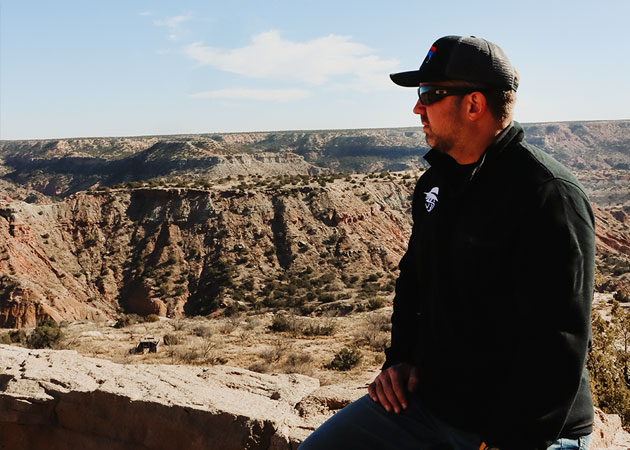
Unless you are from Texas or a hunter, I will bet you have never heard of Axis Deer.
These animals are originally from India and Sri Lanka, where they are referred to as Chital or spotted deer. The deer are thought by many to be the most beautiful deer as their coats are rust-colored and covered with white spots, very similar to a White-tail fawn. They are sizable, weighing in from 110-135lbs, while bucks can weigh in at up to 200lbs.
Exotic and Invasive Species
Axis Deer in Texas has current estimated population of up to 125,000 animals, according to the Exotic Wildlife Association. The highest populations of Axis Deer in Texas are now mainly found around the Edwards Plateau area. Axis Deer are grazers and will eat for food a broad variety of grass, forbs, and browse. This contrasts with White-tailed Deer, who are much more selective, eating predominantly forbs and browse (tender shoots, twigs, leaves of trees and shrubs, etc.).
Whitetail Deer vs Axis Deer in Texas
Per TPWD (article link https://tpwd.texas.gov/huntwild/wild/game_management/deer/exotics/) :
“All these studies indicated most exotics were sheep or goats in a deer’s clothing. That is, they either preferred forbs or preferred browse, but could do well on grass too. White-tailed deer prefer forbs when they are available. As forbs become unavailable, they shift their diet to browse. White-tailed deer cannot live on grass; in fact, they will die with a belly full of grass.
Texas Parks and Wildlife Department also conducted competition studies between white-tailed deer and exotics. Six 96-acre pastures, enclosed with “deer-proof” fence and not grazed by any other animals, were used to determine the effects of exotic ungulates (axis deer, sika deer, fallow deer, blackbuck antelope, and aoudad sheep) on white-tailed deer. Each pasture was stocked with 6 white-tailed deer, and 6 animals of one exotic species. For example, Pasture 1 contained 6 whitetails and 6 axis deer; Pasture 2 contained 6 whitetails and 6 sika; etc.


These studies indicated that exotic ungulates out-compete white-tailed deer, and white-tailed deer will die while exotics continue to thrive. Remember, white-tailed deer can live on only 2 classes of forage (forbs and browse), while exotics can do well on 3 classes (forbs, browse, and grass). As forbs and browse are removed from the area (from excessive grazing/browsing pressure), exotics can shift their diet to grass and white-tailed deer die from malnutrition.”
Forbs
Forbs (sometimes referred to as herbs) are herbaceous, broadleaf plants that are not grass-like. Cropland forbs are typically annual plants that fill seasonal gaps in high-quality forage. Examples of Forbs include:
Axis Venison or Meat
Axis venison is widely considered one of the tastiest wild game venison. It is extremely lean (less than 1% fat on average) and lacks much of the “gamey” taste, which is often associated with most venison.
Ecological Threat
Considered as an exotics and invasive species, axis deer are known to occupy the same ecological niche as whitetail deer. This means they compete with whitetail deer for available resources. With an increased resistance to native diseases, axis deer are not susceptible to the same population decreases resulting from local disease outbreaks. This would allow the axis deer populations to grow out of control while the whitetail deer suffer from local disease outbreaks. Local farmers are at risk of damage caused by axis deer populations growing and foraging in cultivated fields or gardens.
Axis tend to be cautious by nature and show many similarities to the daily activity patterns of whitetail deer – becoming most active around dusk and dawn. Both sexes communicate alarm calls sounding much like a high-pitched bark. Male antlers are shed and regrown annually. Antler cycles are often irregular, depending on what time of the year they were born, with some showing hardened antlers while others are in different stages of growth. This unique trait allows axis to be hunted year-round. Breeding normally occurs in June and July but can occur throughout the yea.
Axis deer estimated range in Texas and the United States
The live interactive map is updated monthly on the range of Axis deer in Texas and the US through crowd sourcing.




Comments are closed.